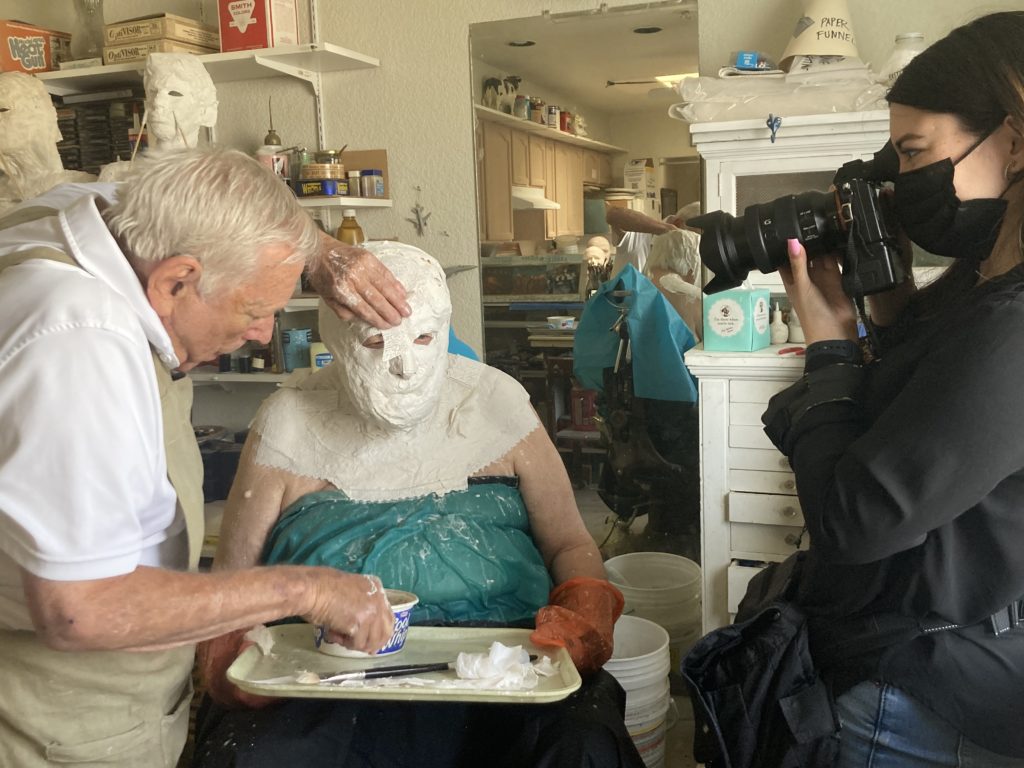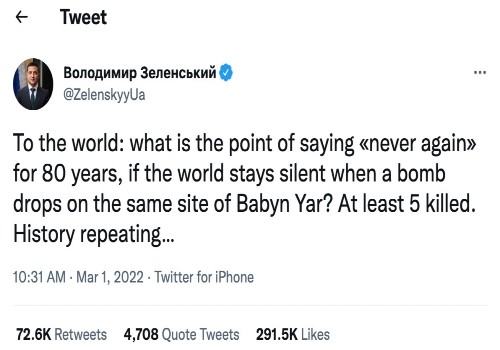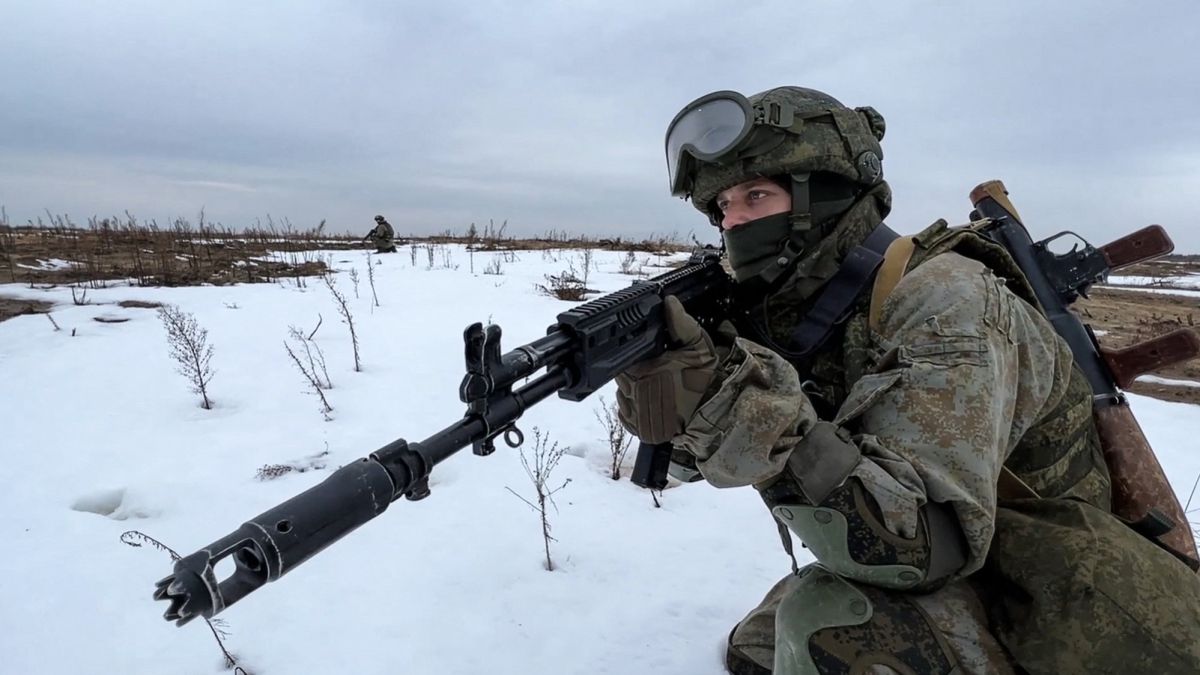Six days before the start of the start of the war in Ukraine, I met a Holocaust survivor named Werner Salinger who was just six years old when he watched the Nazis burn down his hometown of Berlin. This infamous night in 1938 when violence swept across cities and towns in Germany is knowns as “Krystallnacht.” It represented a new level of Nazi aggression against the Jews, and it touched off the unremitting cascade of horrors that would ultimately steal more than 11,000,000 innocent lives.

Just a week before meeting Mr. Salinger, I’d met and written an article about Robert Sutz, an artist who’d lost his family during the Holocaust and who’s dedicated the last 20 years of his life to creating “life masks” to memorialize the dwindling number of remaining survivors.
As I met these two men who are helping to build a Holocaust museum in Phoenix, Arizona, half a world away in Kyiv, Ukraine, a sacred Holocaust memorial called Babyn Yar was only weeks away from being desecrated. Babyn Yar was originally built to mark the 1941 occupation of Kyiv that turned into a massacre of 33,000 Jews — the city’s entire Jewish community.
Last night, just hours before our president would address the nation and the world, Vladimir Putin ordered another airstrike on a radio tower in Kyiv. The bomb killed five people and damaged Babyn Yar in the process. And Putin has used — as sickeningly false subterfuge — the claim that he is doing all of this to “denazify” the country of Ukraine. The painful irony is thicker than the very bricks the Russian killer is toppling.
After the murderous strike, Ukrainian President Volodymyr Zelenskyy sent out the following tweet:
“To the world: what is the point of saying «never again» for 80 years, if the world stays silent when a bomb drops on the same site of Babyn Yar? At least 5 killed. History repeating…”
President Zelenskyy, who has emerged as an authentically inspiring figure by bravely sticking with his people instead of fleeing to safety like some other recent “heads of state” — carries his own historic irony in this story. Zelenskyy’s great grandfather and three great uncles were murdered during the Holocaust. His grandfather. Semyon Zelenskyy, fought against the Nazis and became a father two years after the war ended. Just over 70 years later, the son of Oleksandr Zelenskyy would be elected Ukraine’s first Jewish President.

Last night, after watching our own president deliver his State of the Union, I finished editing the story I shot about Werner Salinger and Robert Sutz. Also included in the video is Sam Harris — who was presented a humanitarian award last night by the Illinois Holocaust Memorial Museum and Education Center. Sam, another child survivor — who was one of the founders of the IL Museum — has also sat as a subject for one of Mr. Sutz’s life masks (watch video).
Three good Jews. Three great men. All still dedicated to teaching what they can so that the world never forgets. Yet never forgetting is not enough. It is but one important piece of what usually turns out to be a far more intricate geopolitical puzzle.
The decisions that American presidents must make about if, when and how our country enters into hot wars are never easy ones. Regardless of what some cable commentators confidently proclaim, these calls are never as simple as they may seem on the surface. The world and the developed countries within it have never been more interconnected. We share important resources and we also restrain our own technical abilities so as not to enter into other forms of mutually assured destruction (or at least major disruption). Cyber, bioterrorism, banking, electrical grid manipulation, etc., etc.
And then there’s nuclear.
One false move or ill-advised tactic can touch off a domino effect that may raise the stakes and inflict an exponentially higher human cost. While it is indescribably sickening to watch what so many über-brave Ukrainians are suffering through right now, America’s president has no choice but to carefully weigh every risk before making any decision to order more kinetic military action.
A look back at the details of JFK’s handling of the Cuban Missile Crisis is a keen reminder of how calculated restraint can sometimes be the way to avoid larger catastrophe. Again, these dilemmas can be dangerously complicated.
On this day when I can’t help but see all of these tragic ironies bumping into each other like bowling pins, I’m just as angry as everyone else is at a deranged dictator who doesn’t seem like he has any plans to stop. And if he doesn’t, America may be forced to take far more dramatic steps.
But for the moment, I pray that President Biden finds the strength to exercise wisdom and the best judgment possible.
I pay enormous respect to the underdog Ukrainians who are courageously fighting for their democratic country — for their freedom — against authoritarian oppression. It is the most American kind of battle imaginable.
And I hope that dedicated nonagenarians like Werner Salinger, Sam Harris and Robert Sutz live to be well over 100 so they can continue to use their experiences and their gifts to teach the world and its leaders that unprovoked sieges against sovereign, peaceful nations only end up in the debasing and/or killing of so many more innocent human beings.
It does not have to be this way. And while America may need to tread carefully for a bit longer, history leaves us no doubt that all of it can change on a dime.


